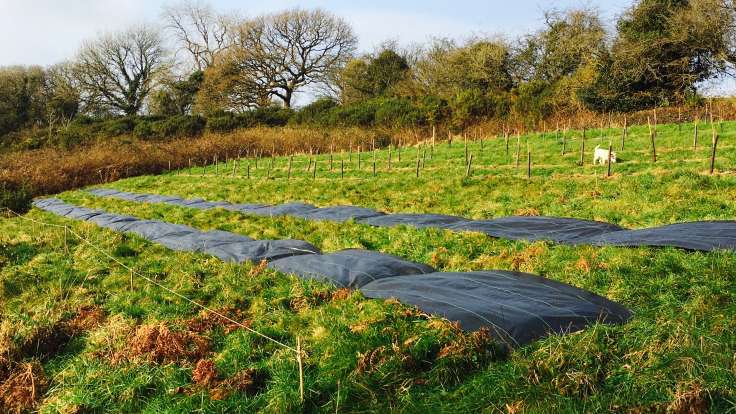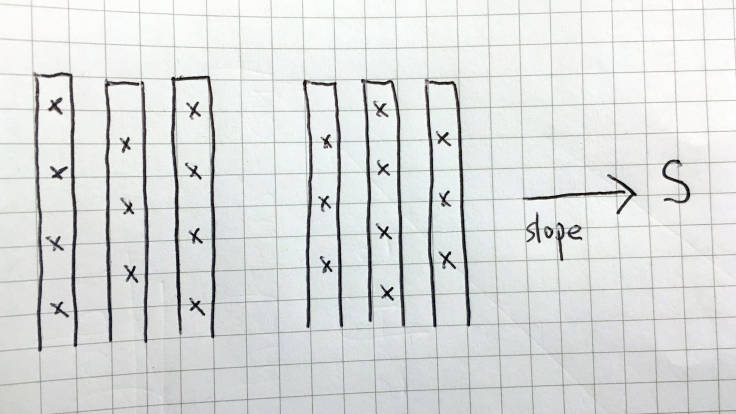
Two new rows of sheet mulch down, ready for the Castanea sativa (sweet chestnut) coppice
Starting the final section of the Coppice, with sweet chestnut to be planted soon
We’re very lucky to have the space to plant a coppice for our woodburners. Today was spent laying down 1 metre wide Yuzet woven sheet mulch with 15cm plastic ground cover pegs. In each section there are 3 rows, 1 metre apart, and the trees are planted 2 metres apart along the sheet mulch. Each section is 3 metres apart. Here, let me draw you a simple sketch:

Sketch of Coppice layout, showing just two sections
In the top section, there’s mostly Alnus glutinosa (common alder), with some Prunus avium (wild cherry) thrown in the mix. The next section is a mix of Alnus glutinosa and Corylus avellan (common hazel). The third and final section, which we’re planting next week, is Castanea sativa (sweet chestnut).
The alder and cherry are firewood and the hazel is for firewood and pea sticks, whilst the chestnut is for fence posts. Apparently it is very tough wood, imported by the Romans to build roof tiles, and so is ideal for fence posts. It’ll take about 6 years to grow to the right diameter, which is about how long it takes to decompose in the ground. Symmetry.
The tree seedlings (whips) are easy to plant – cut a slit in the sheet mulch, use a tree planting spade to dig a slit in the soil, lever a gap for the mychorizzal fungi coated roots, firm the slit shut and mulch the slit with cuttings.